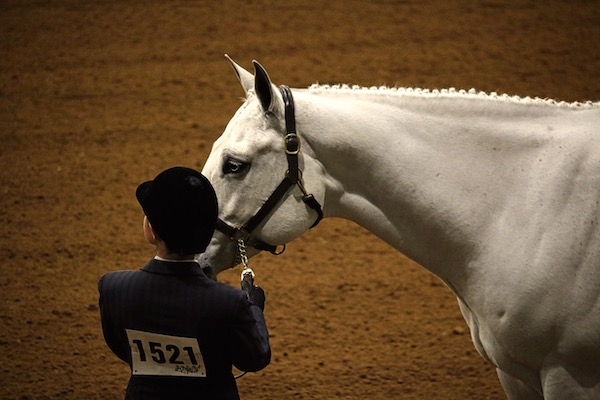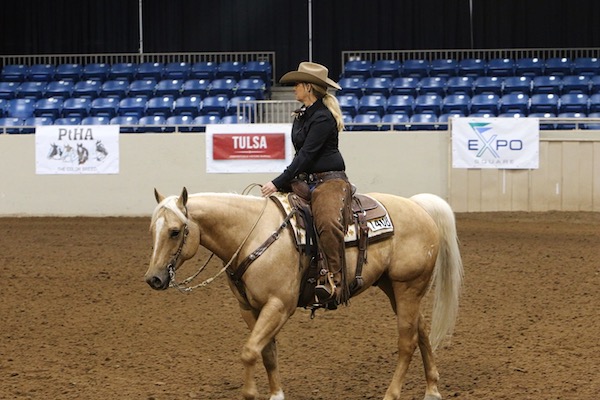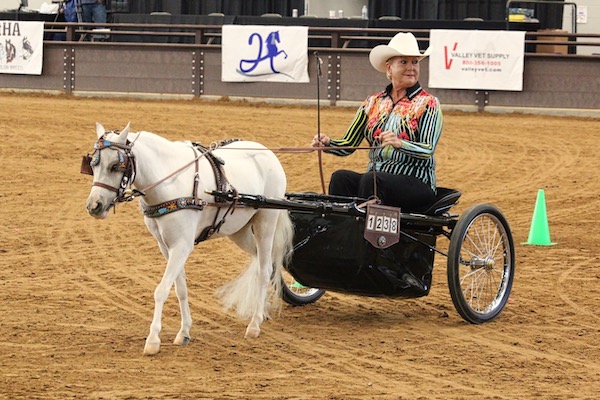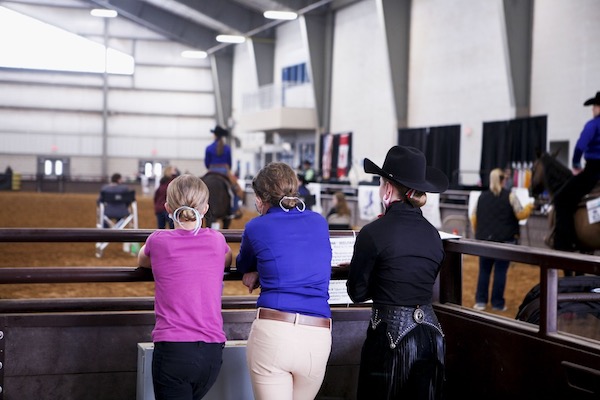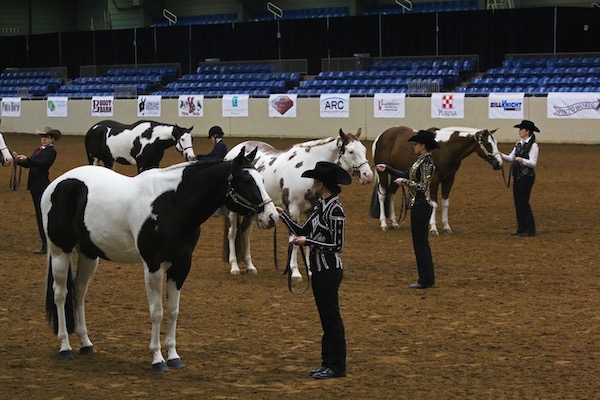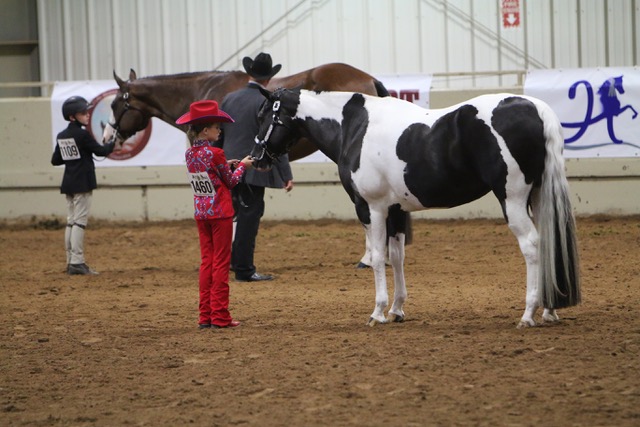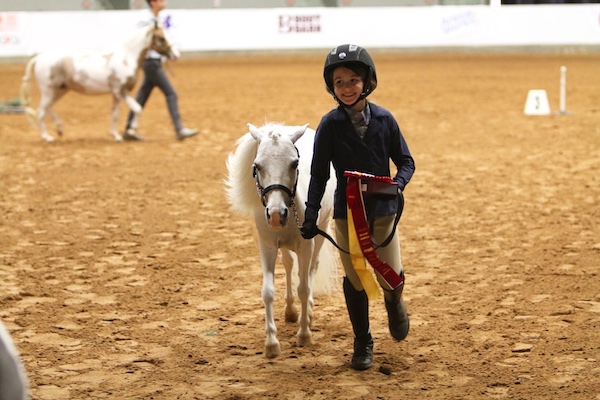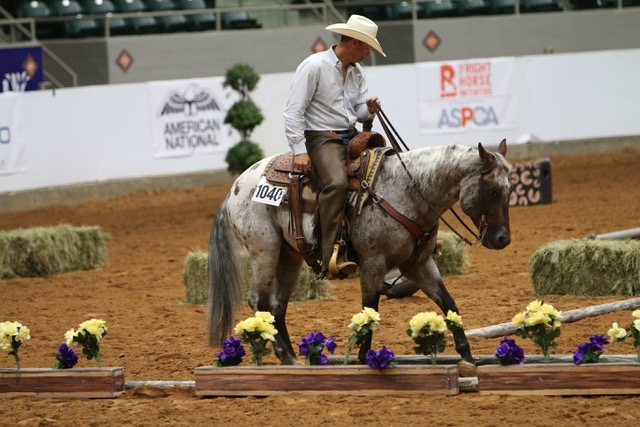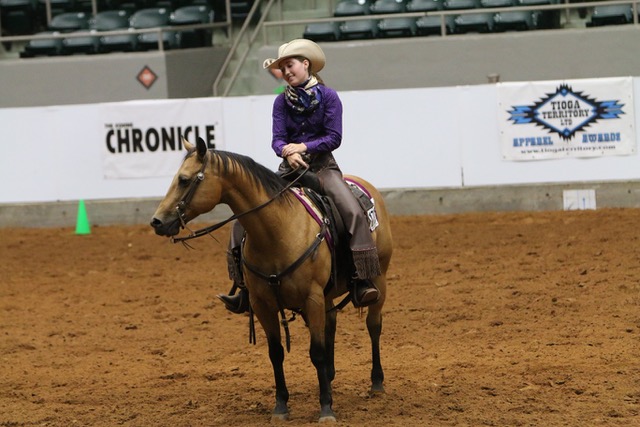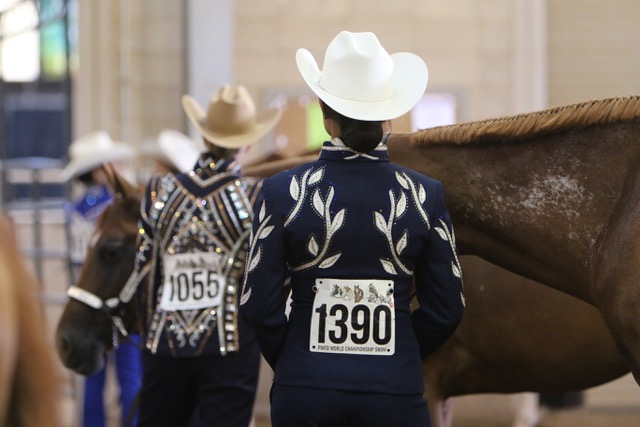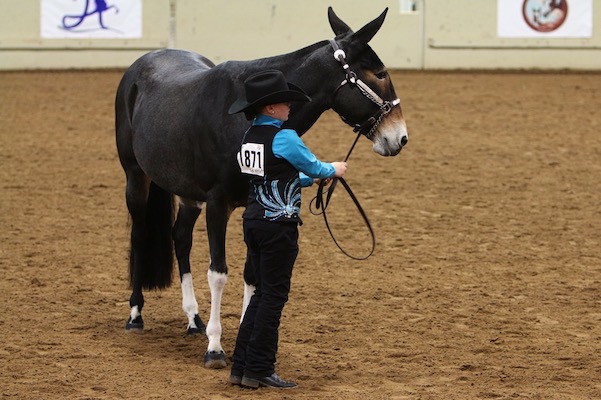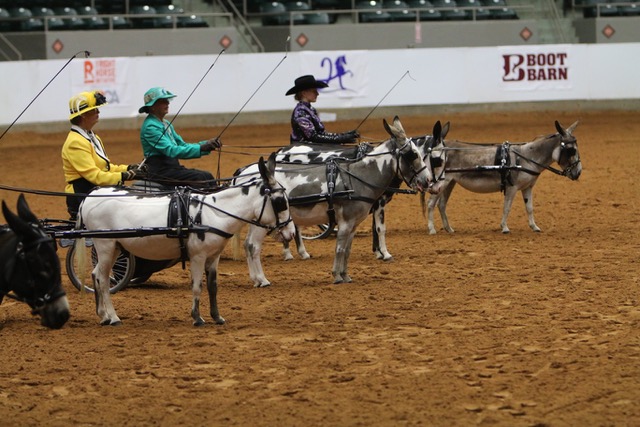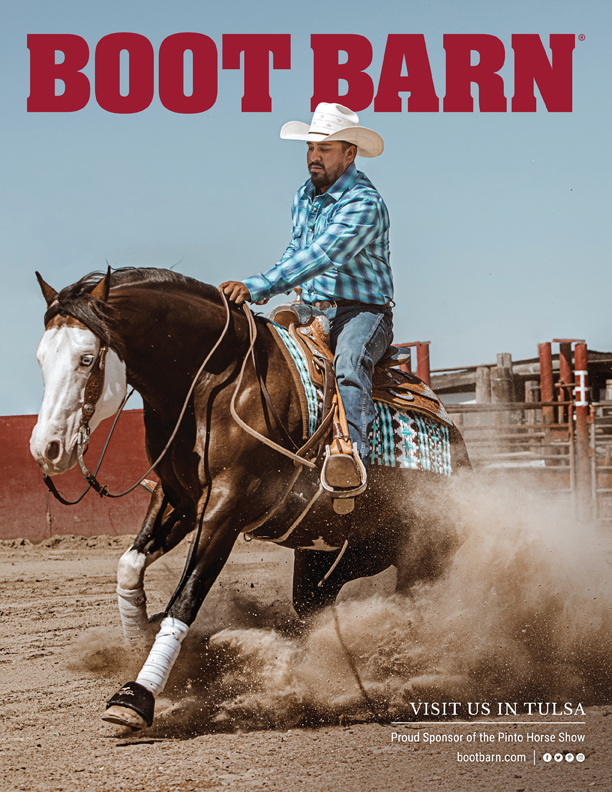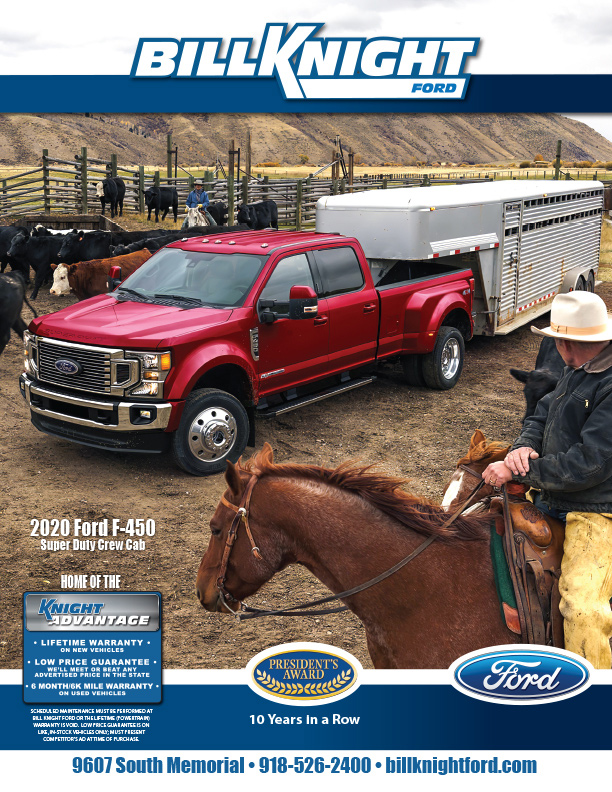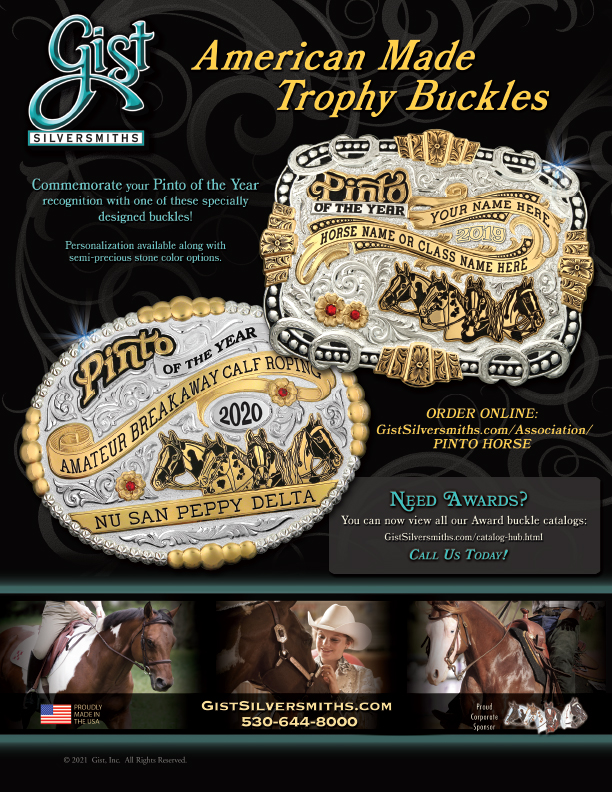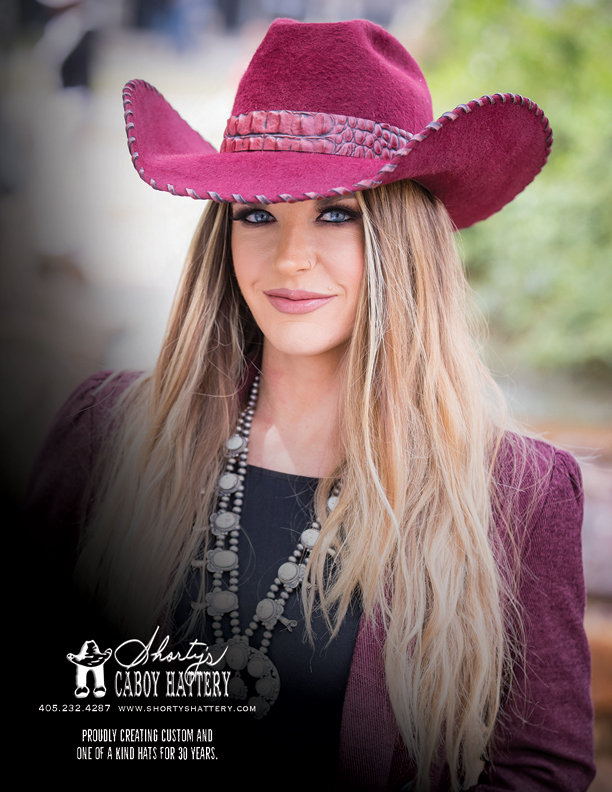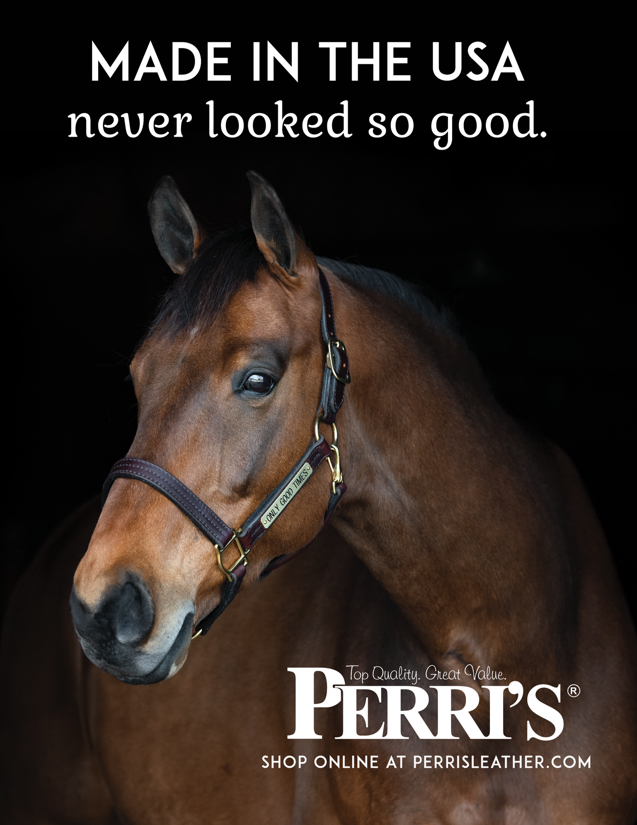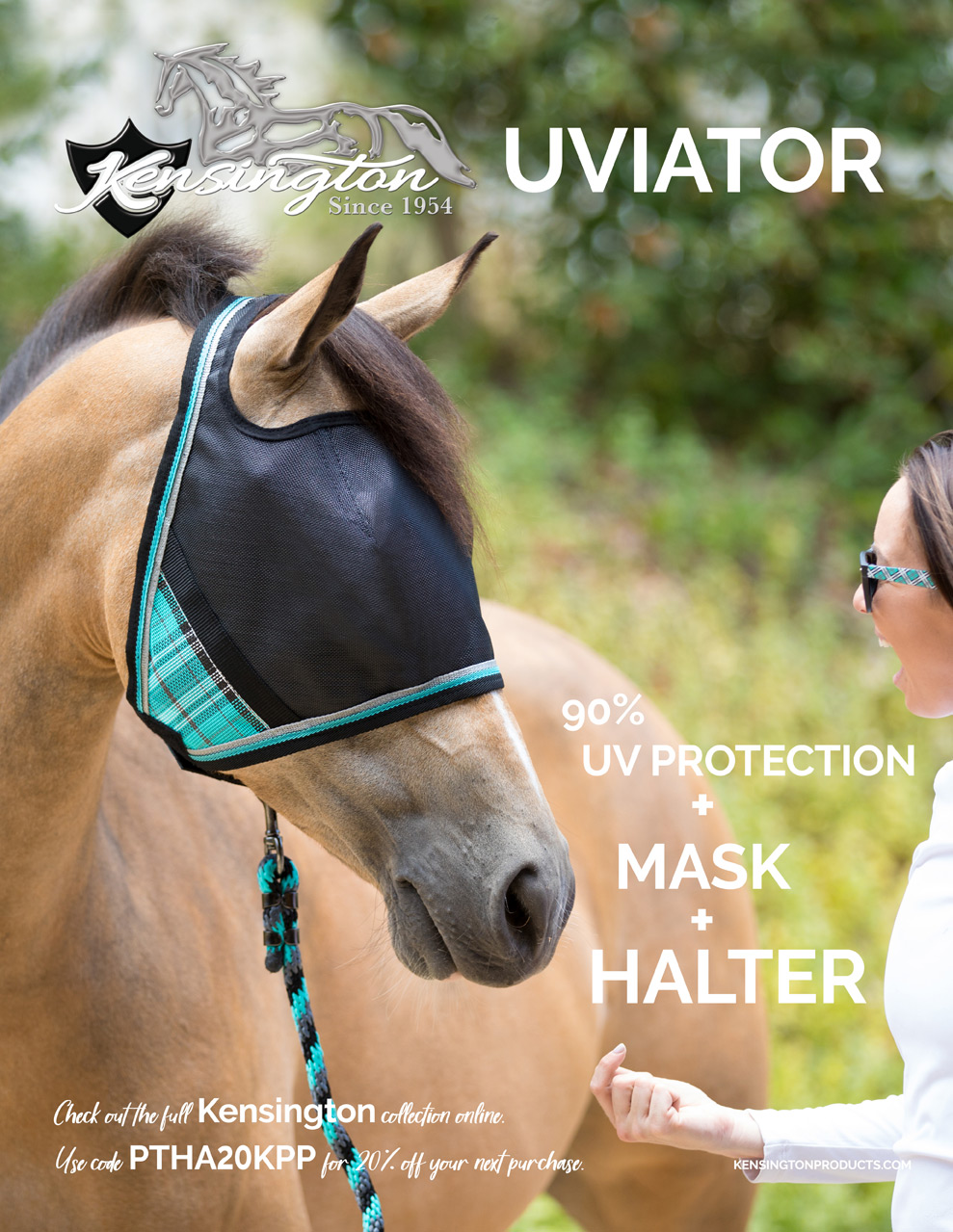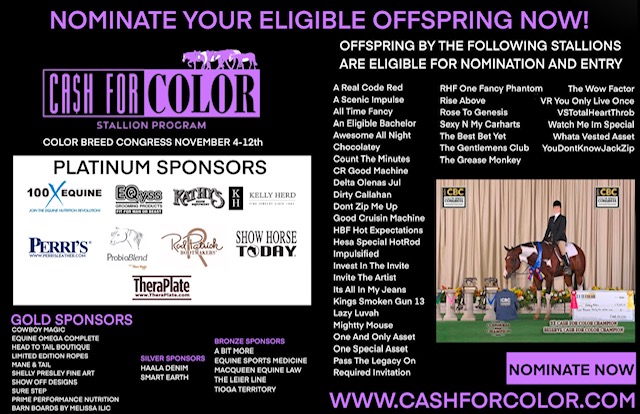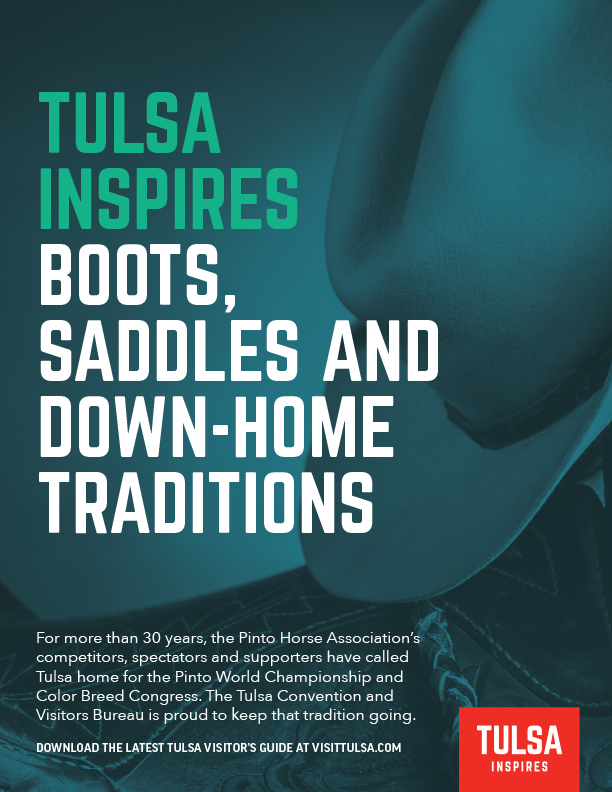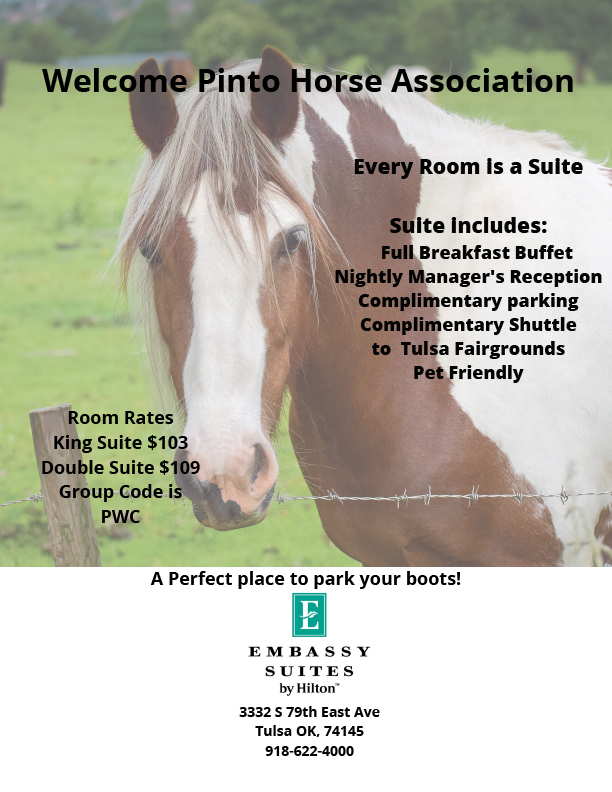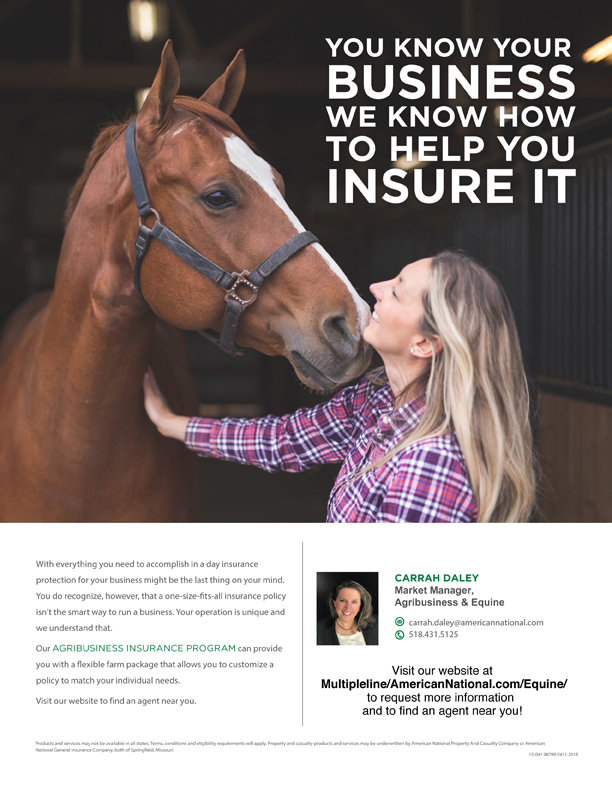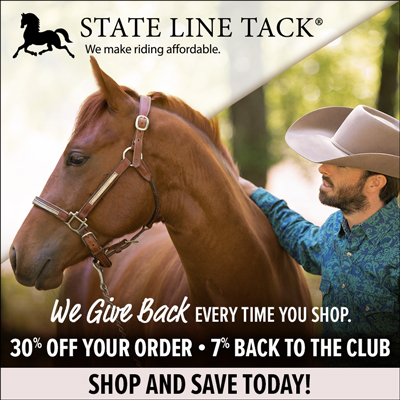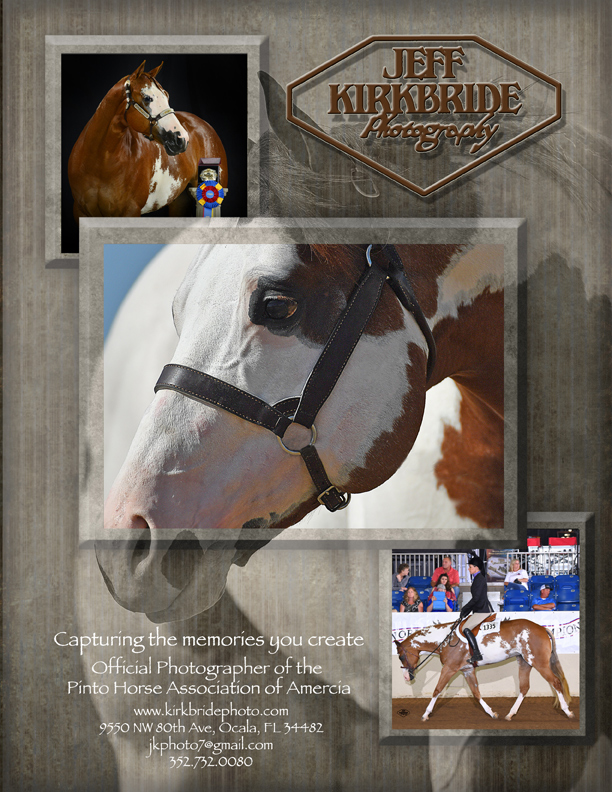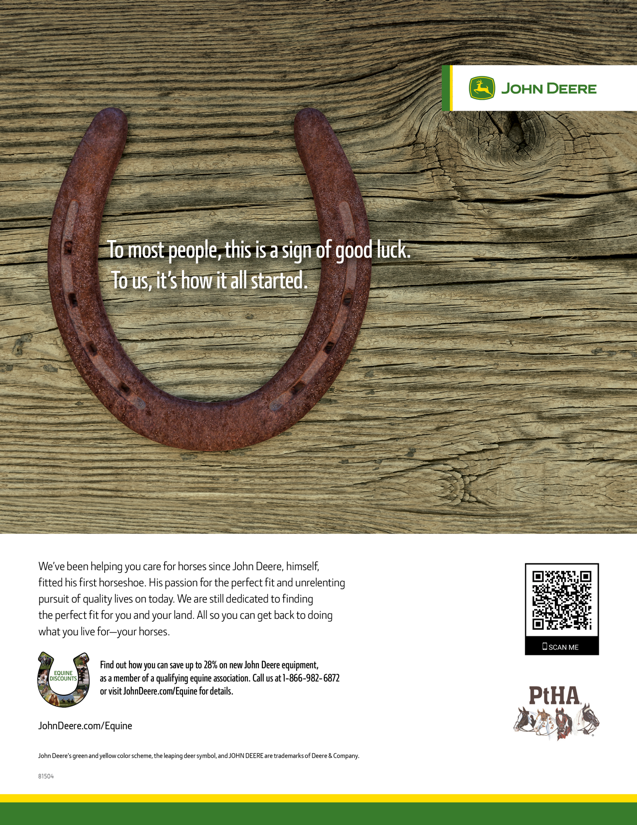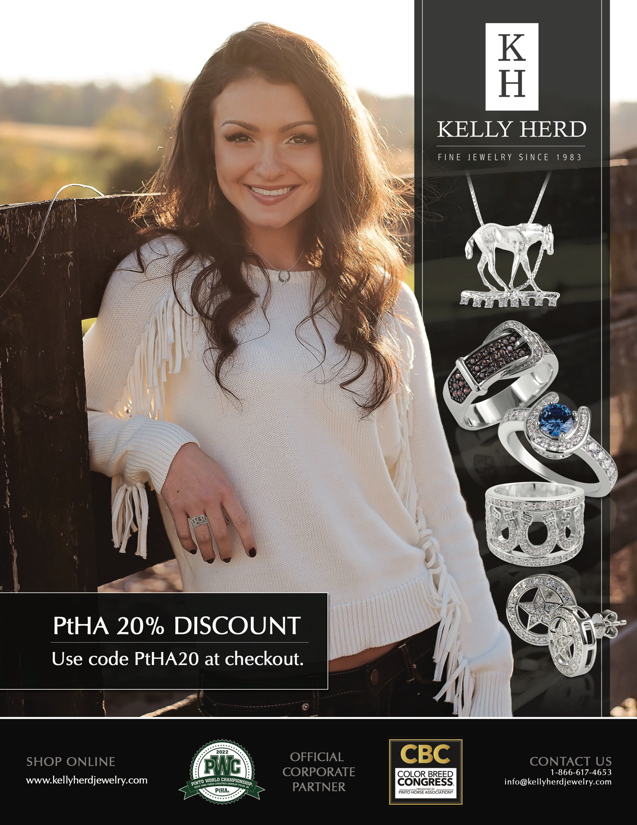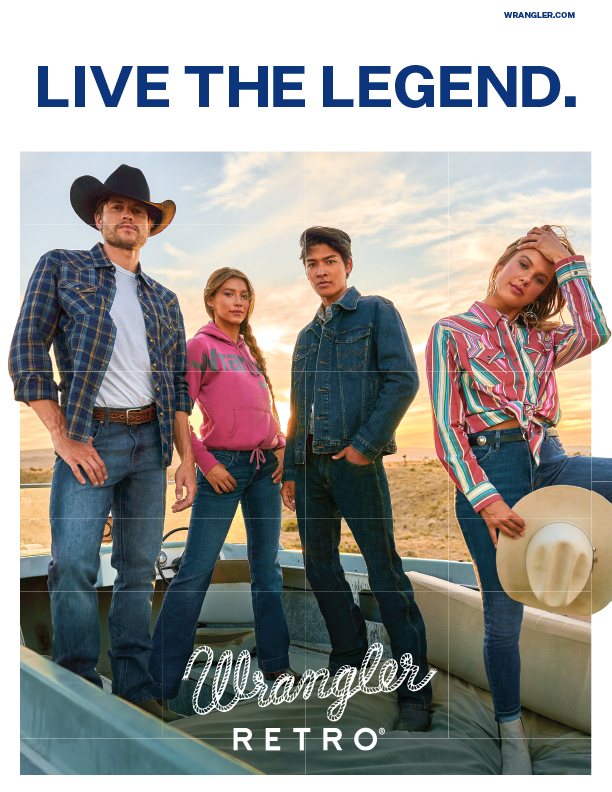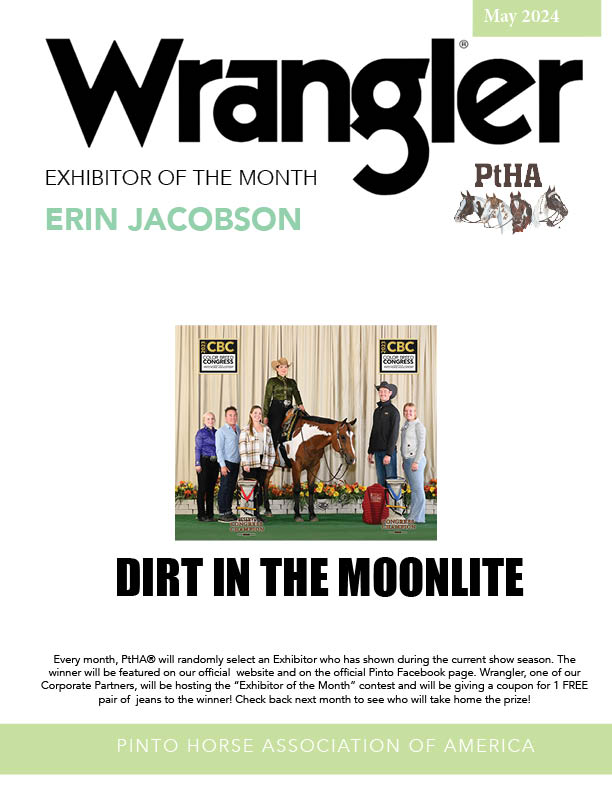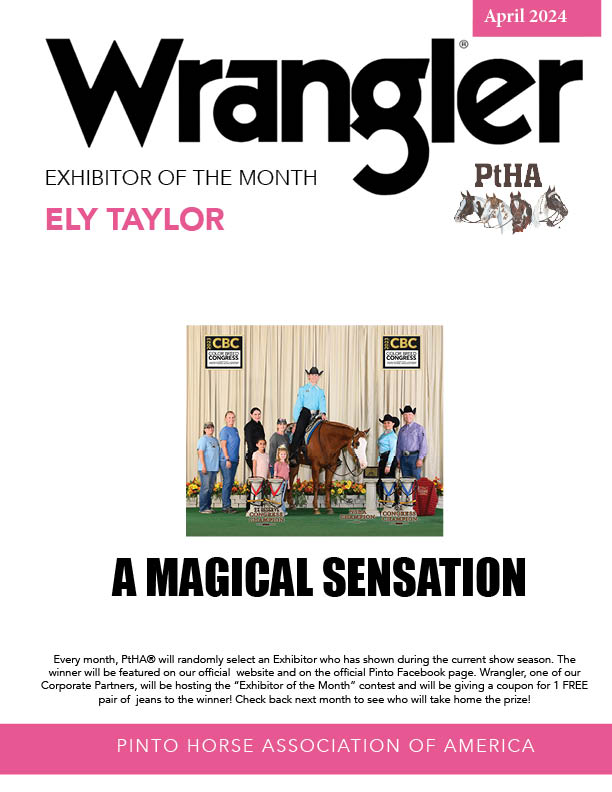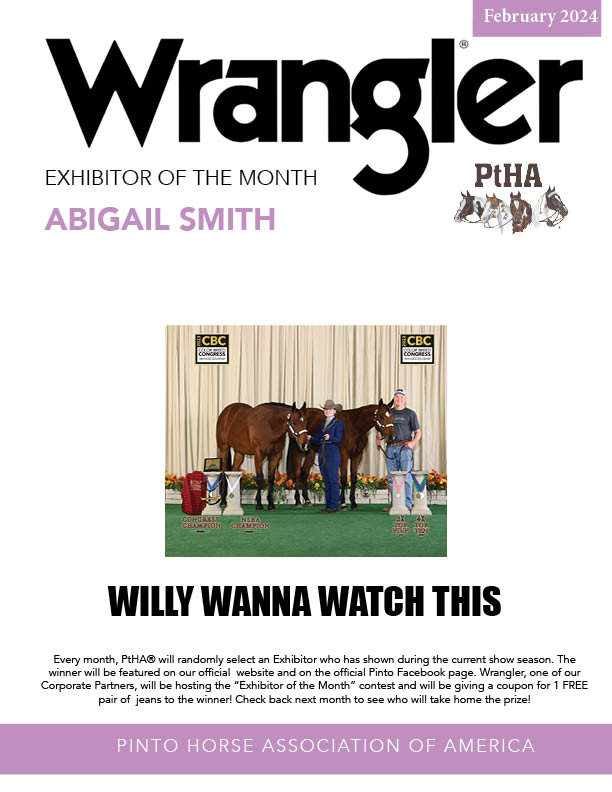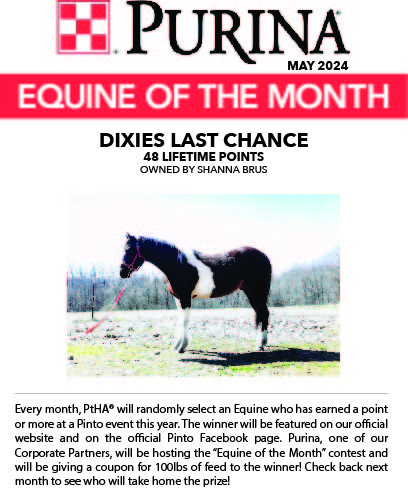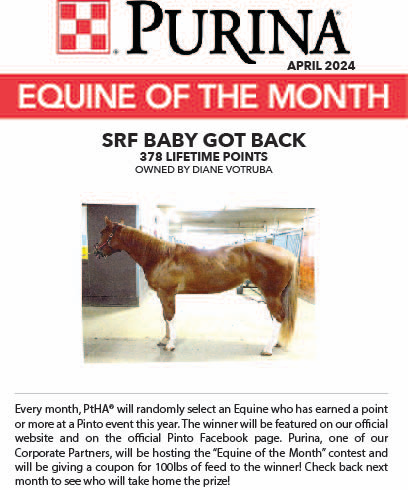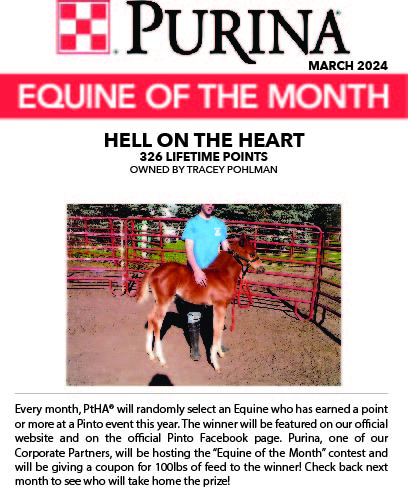Incorporated in 1956, the Pinto Horse Association of America was formed to encourage the promotion of quality horses,
ponies and miniatures with color and to establish a registry for maintaining their show records and pedigrees. The PtHA® has evolved through the years and now has three separate registries: the Color Registry, the Solid Registry, and the Long Ear registry. All equines, no matter the size or breeding, can now qualify to be registered in one of the three PtHA® Registries. With a variety of classes and programs for every level of horseman, PtHA® has a “SPOT” for everyone. Currently, the association serves approximately 88,000 members and boasts more than 157,000 registered Pintos.

2024 Pinto World Championship Show
The 2024 Pinto World Championship is June 8th -June 22nd held in Tulsa, Oklahoma at the Tulsa Fairgrounds. Saturday, June 8th will start off with the youth speech contest. The following day will continue with the youth horse judging contest. Buckles, plaques and more will be handed out in prizes. Both events provide an opportunity for 4H and FFA students to showcase their skills. Pinto World Championship will begin on Monday, June 10th and is a 13 day horse show featuring over 700 classes. PtHA caters to all levels and ages including youth, amateur, novice and open divisions. Prizes including buckles, ribbons, chairs, rose garlands, and saddles are awarded to world champions, reserve world champions, and high point winners. We can’t wait to see you there!
The Yellow Rose Futurity is a WCHA sponsored futurity event that will be held within the 2024 Pinto World Championship Show, in Tulsa, OK. This event is an All-Breed Futurity, open to offspring with AQHA, APHA, Pinto, PHBA, ARHA, ABRA, or ApHC registry. Special Awards to horses registered with Pinto.
The Yellow Rose Futurity will feature 8 stakes classes for Non Professional Exhibitors:
- Non Pro Yearling Mares
- Non Pro Yearling Geldings
- Non Pro Yearling Stallions
- Non Pro 2 Year Old Mares
- Non Pro 2 Year Old Geldings
- Non Pro 2 Year Old Stallions
- Non Pro 3 Years and Over Mares
- Non Pro 3 Years and Over Geldings
Entries must also be sired by stallions nominated into the Yellow Rose Futurity Program. Contact the stallion owner of your entry and work together to get their stallion enrolled !!! Open To ALL BREEDS !!!
Updated January 6th, 2024
We have a new texting communication service offered at the Pinto World Championship! Sign up to receive notifications about what’s happening during the show!
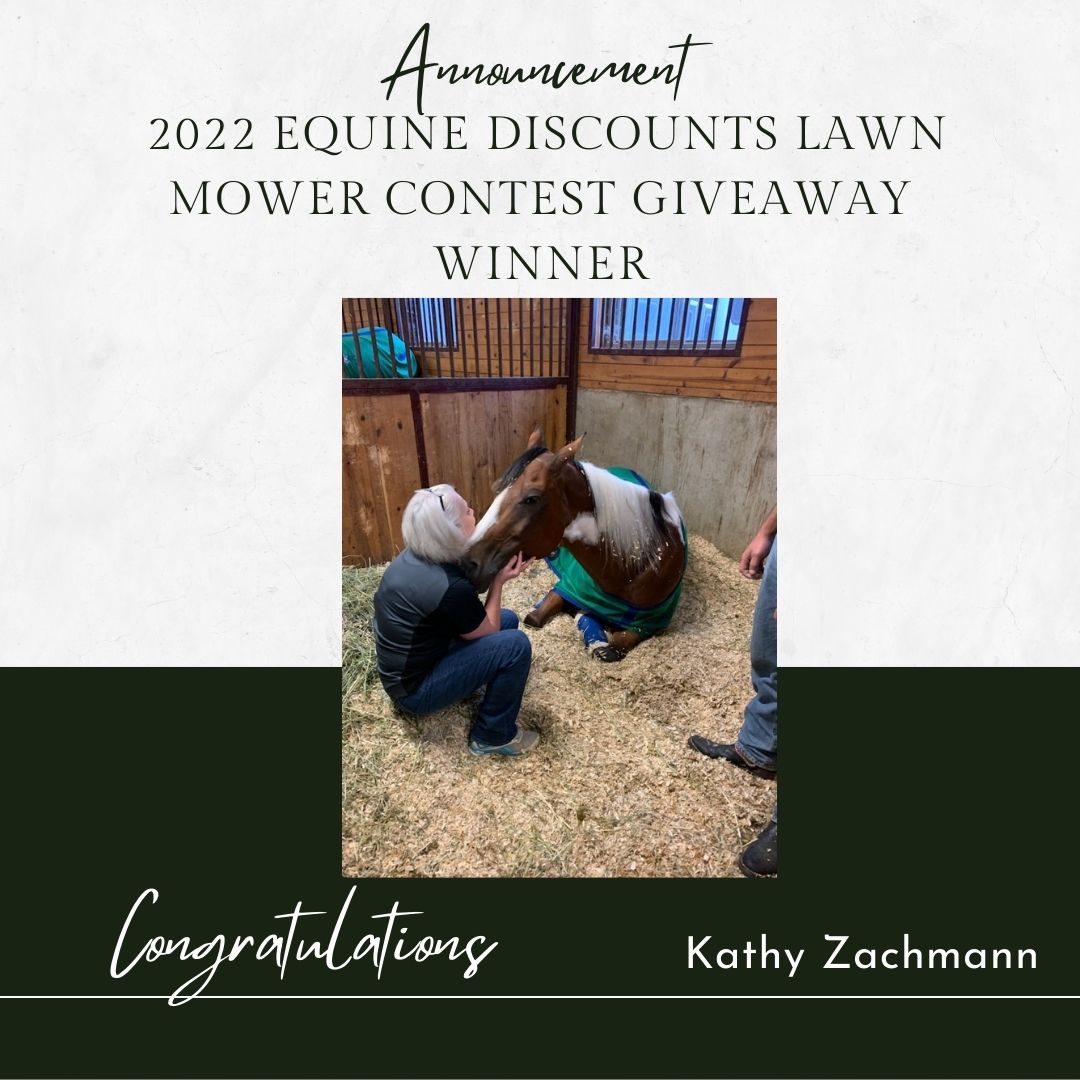
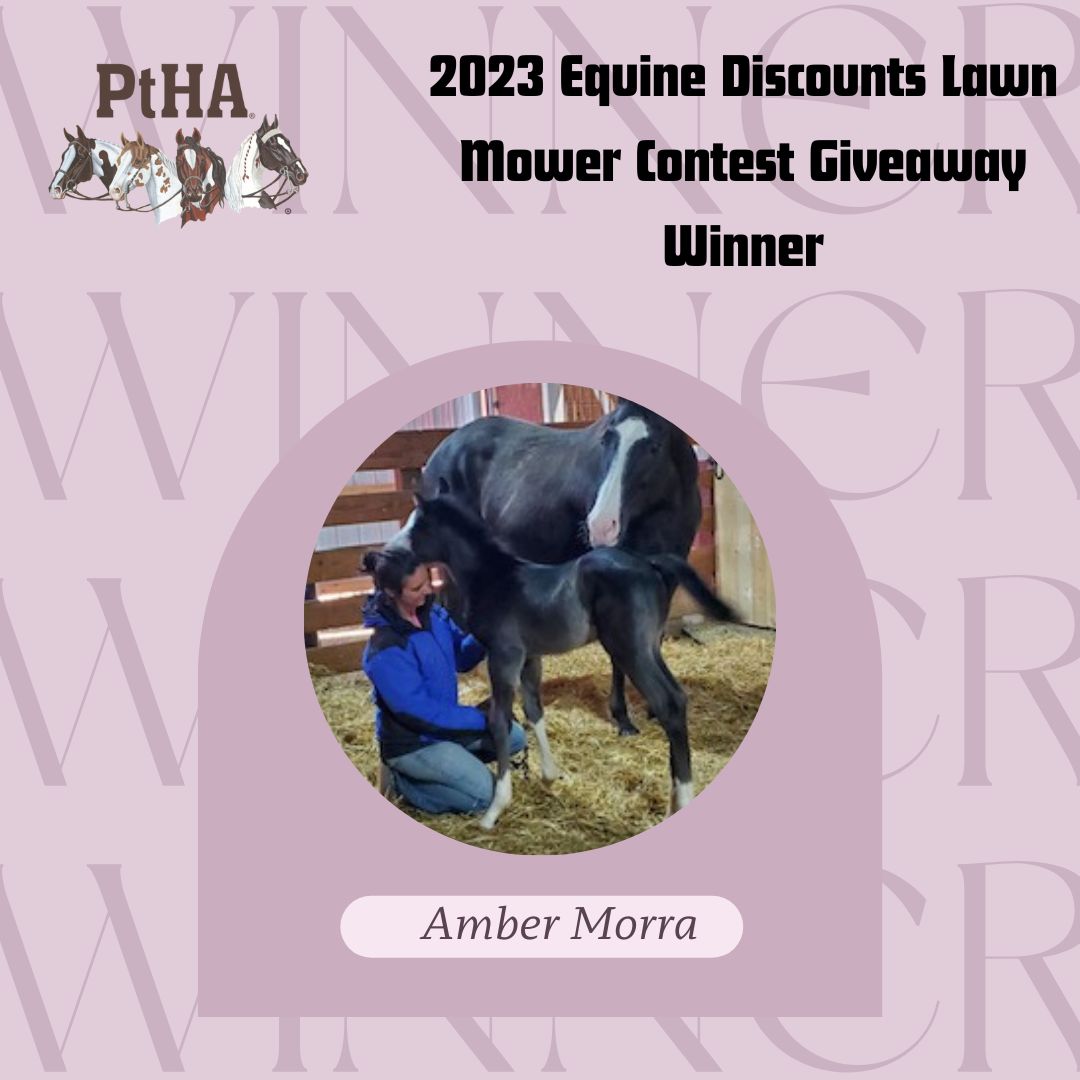
Pinto Horse is published online four times a year: winter, spring, summer and fall. The magazine is dedicated to the advancement and improvement of the breeding and performance of the Pinto horse. The magazine's purpose is to promote educational, scientific and informative material for the benefit of Pinto horse owners.
The Pinto Horse Association of America is a proud partner of Kensington and with their collaboration, we are excited to bring you an exclusive line of Pinto luggage! There is a variety of options at an affordable price, so click on the link here to view the Pinto Luggage collection and get your order in today!
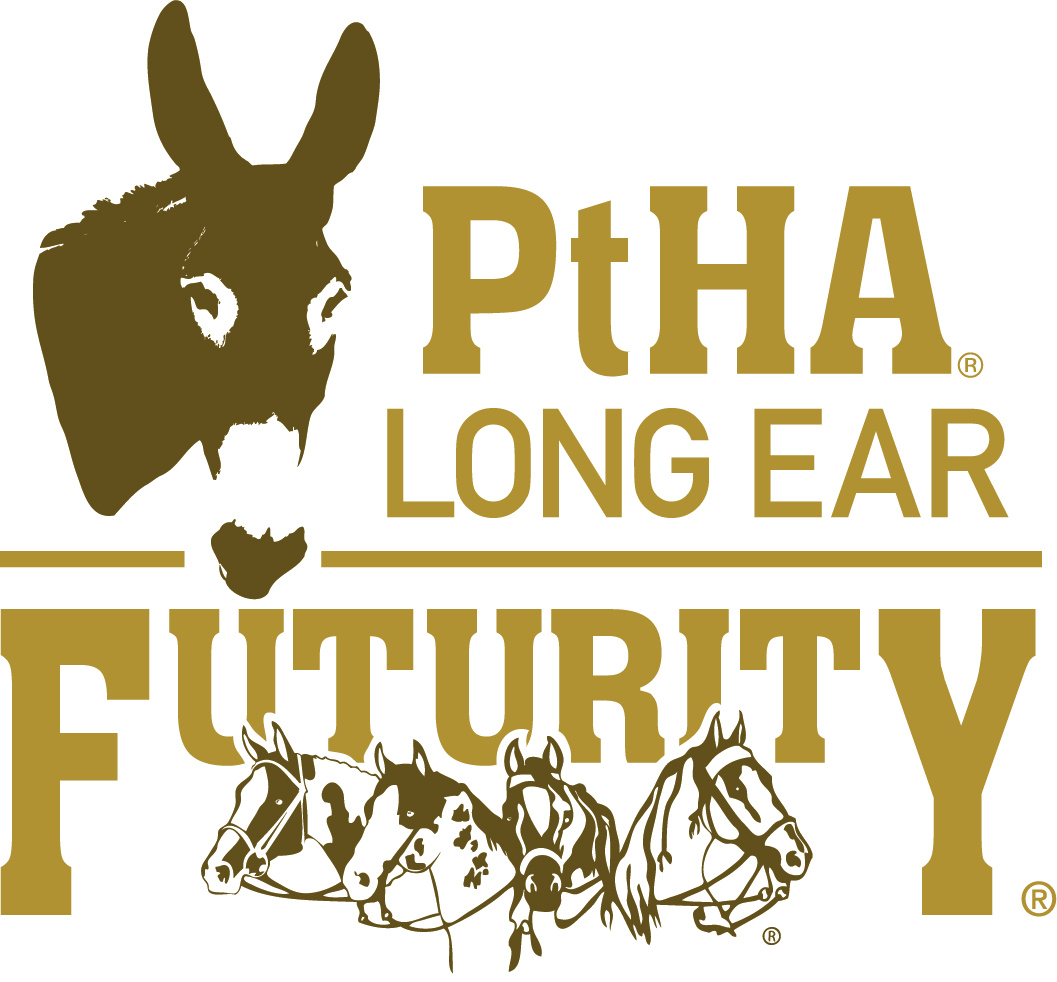
Let’s Get Ready to go to the Horse Show
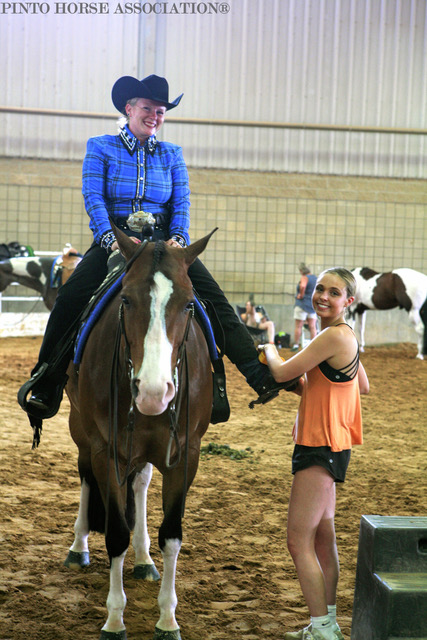 Let’s Get Ready to go to the Horse Show
Let’s Get Ready to go to the Horse Show
Everyone talks about their placings or their performance after coming away from a horse show. The scores you were given and why, or how your horse performed in the arena. Nevertheless, what about how much time and effort was dedicated just to getting prepared for the big show day? Let’s stop and think about the preparation that must take place before you step foot into the arena because it might be just as equally important.
Tina Langness, a horse trainer of 38 years, spoke on this topic as she understands the importance of finding the right routine for show preparation. Langness started her career as an amateur and continued to move her way up and discovered handling most breeds of the equine industry. Langness is an all-around trainer as she has focused on both the English and western disciplines.
“Before a show, I would advise to think about which classes your horses are best suited for,” Langness said. “And not only that, but also what classes you are looking forward to the most,” she added.
She also expressed the Pinto Horse Association of America offers a variety of classes at all horse shows, and it can be challenging to narrow down which classes people feel the most confident in and best works for their show schedule.
“It is always important to have the show schedule on hand and to keep it in mind as you are thinking about classes to enter,” Langness says.
Before a horse show, Langness recommends exercising and practicing show patterns with your horse as it helps build confidence for show day.
“A week or two before a show at my barn, we practice the patterns and the maneuvers we will be completing at the upcoming show,” Langness said. “This way we are preparing our horse and rider close to the time for the show.”
Langness also mentioned when exhibitors start to feel the nerves about a show she recommends for people to think back to remember why they ride and the joy they have experienced from showing.
“There can be pressure going into the world show or any horse show. Going into the Pinto World Show specifically, a lot of people want their horses in their world show peak, meaning top condition,” Langness explained. “However, this can lead people to feeling less prepared than they realize.”
To put this into perspective, the practice pen and what is accomplished there can have the biggest impact going into a big show, she added.
“I think putting more pressure on the horse and rider at home in the practice pen makes performing at a show less stressful when it is time,” Langness says.
“Ideally, a rider wants to feel like they are competing at a show and practicing at home is no different," Langness said. “For the horse, it can feel different as the settings have changed and the nerves of the rider can be felt through body language.”
Langness also mentioned she likes her riders using close to the same tack at home as they do when they are showing. “One thing I have learned is keeping the tack in the practice pen and at the horse show consistent,” Langness said. “ The horse can sense if the bridle or saddle feels heavier and this can make a difference in their performance.”
Something else to consider when going into a show is making sure to prepare enough time dedicated to packing all tack for the horses. This may not seem challenging, but when you are entered in a variety of classes it can be stressful remembering to bring everything. Langness suggests to find a system that works best for you to keep track of everything you need.
“I work best off of a checklist to keep me on track, I am the post-it queen!” Langness declared.
Hunt seat equitation has been a class in horse shows for several years showcasing English riders. Langness has helped numerous riders go on to win hunt seat equitation classes through time and dedication. She explained what distinguishes equitation from other English classes is the focus more so on the rider.
“Hunt seat equitation is all about how the rider communicates to the horse,” Langness said.
Focused and having shown in many equitation classes, Langness began describing what the judges are looking for in an equitation class by stating, “the judges want to see a pattern that is consistent and pleasing to watch, you want to see the rider and horse working together as a whole.” It is important the horse is held on a tight rein and to have your horse remain collected. The riders also need to have a connection with their horse through the movements of their legs, Langness explained.
No matter the discipline, prepare to have a consistent ride and have fun during the process. Remember to prepare and pack efficiently to be set up for a successful ride.
Horses, Donkeys and Mules. What’s the Difference?
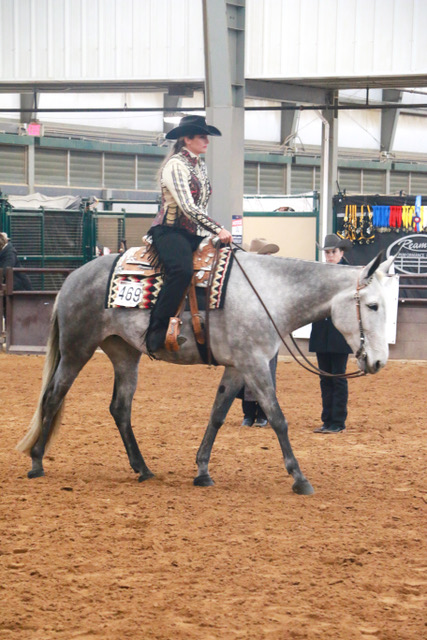
Horses, Donkeys and Mules. What’s the Difference?
When most people think of a horse show they think of horses and riders performing in various classes competing for prizes and championship titles. But what if people were told donkeys and mules perform in the same type of classes? For most it would be hard to believe that mules and donkeys can perform in the same type of horse disciplines and perform to a high degree of difficulty.
Sharon Wellmann, a horse trainer and previous AQHA judge and chairman of ABRA Judges Committee who now resides in Conroe, Texas, had a fascination with horses from a young age. Wellman is from the east coast and growing up was always talking about riding horses.
“My grandpa bought me my first pony and then paid for my first set of riding lessons and I never looked back from there,” Wellmann said.
When she first started riding she rode hunter jumpers, but later shifted as she enjoyed riding in western events, Wellmann added. She continued to pursue a career in training horses, but followed her parents advice and received a college degree from Texas A & M, Wellmann explained.
“After college I began my career as a horse trainer, and I had clients who were going to the Pinto World Show and that is how I got involved from there,” Wellmann said.
She was excited to discuss the similarities and differences between horses, donkeys and mules. Wellmann expected to continue pursuing her passions with horses, but stumbled on an opportunity to learn more about donkeys, she added.
“One of my client’s granddaughters needed to learn how to lope a donkey and asked for my help,” Wellmann said. “The same client was also raising miniature donkeys at the time and I was sent a mule to ride, so that is how the journey began.”
After spending time with donkeys Wellmann decided she wanted to try a new direction and begin working with mules, she added.
“With training mules and donkeys it is a longer process than with horses, you can normally count on years of training and commitment,” Wellmann said.
Wellmann discussed and highlighted similarities between horses, donkeys and mules from her experience of showing all three types of equines.
“When it comes to riding everything is the same as far as feeling the equine and gaining responsiveness,” Wellmann said. “As two year-olds, donkeys and mules can start being broke to ride and in all three equines you want to maintain control, focus on their frame and quality of movement.”
Mules and Donkeys can be more stubborn in their ways and can be challenging to train and it is important to have patience, Wellmann said.
“It can be harder to gain the respect of a donkey or mule, but once you get it, they start looking to you for answers,” Wellmann. “Male mules in particular are more difficult to handle because their instincts tell them to protect themselves.”
Based on the stereotype, mules can be categorized as unintelligent equine, but Wellmann says, “I would disagree as Mules don’t easily forget, they have a different thought process than you would think.”
Although they are similar, donkeys and mules are just as equally different, Wellmann admitted.
“Mules have more athletic ability being crossed with a horse and can change in body movement more easily than donkeys,” Wellmann said.
Mules and donkeys show in the same type of classes as horses as they have the opportunity to show their strengths, Wellmann said.
“There are halter, showmanship, hunter under saddle, pleasure, obstacle driving, trail, speed events and many more classes for donkeys and mules as they can do all disciplines,” Wellmann said.
At most horse shows exhibitors like to get their horses out and lunge them in warmup arenas, but for donkeys and mules having an open round pen is the best method of exercise, Wellmann explained.
“Having more of an open space to exercise really helps,” Wellmann said. “ Donkeys and mules love the dirt so much and allowing them to run and roll in the dirt allows them to be themselves.”
More recently, exhibitors showing in the long ear divisions have brought their game as they focus on the overall quality of the presentation of the equine, Wellmann explained.
“We are showing in the same type of outfits you see people showing horses in,” Wellmann said. “Sparkles and all!”
Wellmann recognized PtHA and the Long Ear Futurity at the Color Breed Congress show coming up in November.
“I am so thankful we have the opportunity to compete in the Long Ear division as this opportunity gives our mules and donkeys credibility,” Wellmann said. “People have stopped us at shows as they are eager to learn more about showing mules and donkeys.”
The Color Breed Congress show is just around the corner. Be sure to checkout the Long Ear Futurity in conjunction with our Color Breed Congress showing starting November 4th in Tulsa, Oklahoma. You won’t want to miss it.

Managing a Horse Show
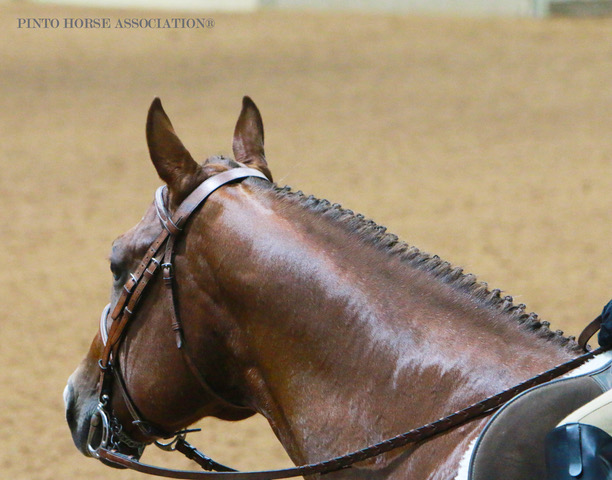
Managing a Horse Show
Any event takes time and work to manage. Getting dates, times and places ready for any event can always present its own challenges. On top of that, think about a horse show and all of the preparation that must take place.
Carmen Lay, a show manager of Smyrna, Tennessee, understands the commitment and dedication it takes to run a horse show.
“I grew up with a horse, but did not pursue showing horses as it was not as popular in Tennessee,” Lay said.
When she got older, Lay decided to move away from home and eventually got married, she added. Lay later had a daughter who wanted to get involved with horses in 2006, she said.
“By 2008 there was a show secretary position available and I decided to take it as it would give me an opportunity to travel and spend time with my daughter at the horse shows,” Lay said.
Lay first got involved with the American Paint Horse Association and managing their shows and events, she said.
“I started out with APHA, and I learned about Pinto, there was just not a lot of Pinto shows happening in Tennessee,” Lay said.
The APHA club in Tennessee split, so she went to a Pinto charter and got more involved there, Lay explained.
“I eventually got involved with a Pinto charter and got certified to be a show secretary for PtHA, AQHA and the Appaloosa Club”, she said.
An important aspect of being a show secretary is being able to find dates and facilities that do not conflict with other horse shows, Lay said.
“It depends on where you live but in Tennessee, there are not as many horse shows so Paint and Pinto shows have to watch out for each other’s events,” Lay said.
Part of her job is hiring the horse show staff, including the ring stewards and judges, Lay said.
Lay looks to hire all of the show staff, and she has also traveled all around being a show manager, she said.
“I have traveled a lot as a show secretary and worked for horse shows all across the southeast part of the United States,” Lay said.
Her favorite part of her job is getting to meet new people and interacting with the exhibitors, Lay said.
“I have a background in customer service and it is helpful that I can carry those skills over to being a show secretary because at the end of the day the exhibitors are customers,” Lay said.
Lay has enjoyed being a show manager for Pinto over the years as she has developed a positive relationship with the staff, she said.
“Pinto is easy to work for,” Lay said. “I can call someone and talk to someone easily and get answers at a fast turnaround.”
Learning the Right Horsemanship Skills
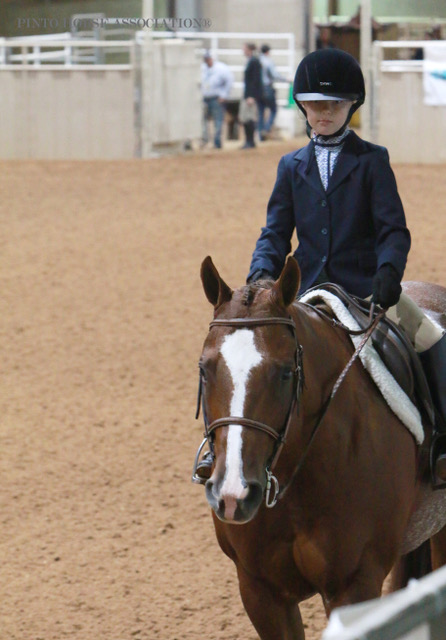
Horsemanship is a delicate line between the horse and rider where they have to understand and maintain a connection in order to perform at a high level. The challenge lies from within, and takes time to develop the skills alongside a horse.
Roger Altman, who has served on the PtHA judges committee for over 30 years, understands the challenges and rewards of showing in horsemanship classes.
Altman began showing horses at 5 years old with a POA Pony, and then moved to showing appaloosas as a youth, he said.
“After showing appaloosas, I started to show more pinto and paint horses,” Altman said.
Altman began his journey with PtHA as he ring mastered at the PtHA National Show in Detroit in 1988, he explained.
“Later on in 1990 a customer asked if I would show a horse in western pleasure at a pinto show and I have been involved ever since,” Altman said.
When it comes to showing in horsemanship classes, the first important thing to remember is to know your pattern and begin to practice the elements, Altman said.
“I tell people just practice, keep practicing and more practice,” Altman said.
Practice looks different for everyone as for some horses it is better to practice the entire pattern and with other horses they work best when you only practice certain elements of the pattern, Altman added.
Horsemanship is all about the riders ability to ride and guide the horse through the pattern, Altman explained.
“Horsemanship is fifty percent the horse and fifty percent the rider and how well both of them do together completing the pattern,” Altman said.
The judges are looking for exhibitors who are harmonious with their horse, making the pattern one fluid motion with the horse, Altman said.
“It is important to know your limitations and your horse,” Altman said. “If your horse is not good at a maneuver don’t keep pushing.”
Everyone learns and processes information a little differently and that goes for learning riding skills and practicing horsemanship maneuvers, Altman said.
“Not everyone will learn the same way and the key is finding out how the people you are working with learn best,” Altman said.
Showing horses is fulfilling as people always walk away learning valuable life lessons, Altman said.
“With showing horses you experience success, defeat, and it teaches you dedication,” Altman said.
Altman has been involved with PtHA for over 30 years and applauds to see how the organization has grown and evolved over time, he added.
“The thing I love about PtHA is they have something for everyone,” Altman said. “It is a family- oriented organization and I am proud to be apart of it.”
Exhibitor's of the Month
Equine's of the Month

